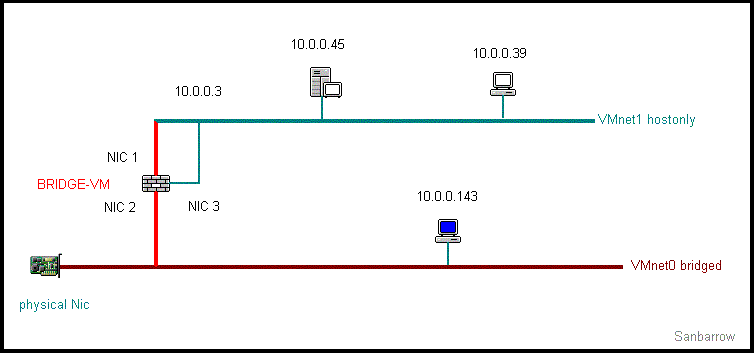
| 10.0.0.3 | Admin-Interface of Bridge-VM | vmnet1 hostonly |
| 10.0.0.45 | Host | vmnet1 hostonly |
| 10.0.0.39 | Server A | vmnet1 hostonly |
| 10.0.0.143 | Server B | vmnet0 bridged |
The VM with 3 Nics works as a transparent bridge - Nic 1 and 2 don't have an IP-address, Nic 3 is used for remote administration. The host has no IP on vmnet0 - only VMware Bridge Protocol is required.
VMnet0 is down : the host can access server A and B and the admin-interface of the bridge.
VMnet0 is up: the host and everyone else can access server A and B
The transparent bridge VM must have a ruleset that passes any protocol from anywhere to anywhere. I prefer OpenBSD for this scenario - m0n0wall (small FreeBSD firewall from CD) can do this - any recent Linux will work.
Advantage: Host and VMs are in one subnet - no matter if the bridged network is up or down.
When the bridge is up all nodes can be addressed from the outside without having to do any
reconfiguration.
Drawback: the transparent bridge VM has to be active to access LAN or WAN from the host.
